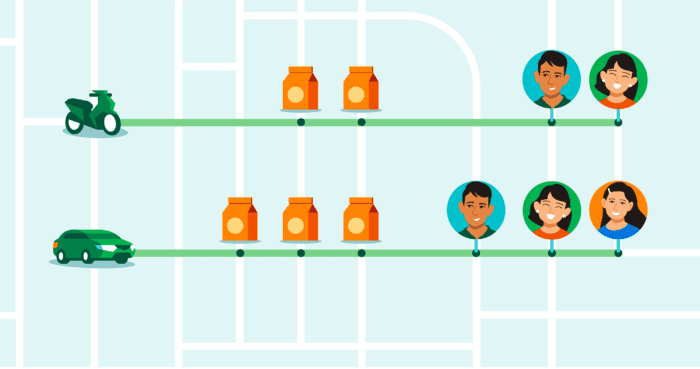How the ‘Saver’ option for food deliveries works
Affordability is a significant factor in deciding what to order for food delivery. One component of that is the delivery charge, which can fluctuate over the course of the day. This depends on factors such as the availability of delivery riders, and as demand surges in your area.
During lunchtime in dense residential districts, for example, prices can surge as people in the same area start ordering food at the same time. The delivery network stretches to accommodate, but higher delivery charges at checkout can put off some users.
The GrabFood team started experimenting with differently priced tiers for delivery, to appeal to users at varying levels of price sensitivity.
One of these new options, called Saver, offers users a lower delivery charge, in exchange for a longer delivery time.
Batching lets delivery-partners earn more by completing more orders with less time and effort.
To make this happen, the team relied on hyper-batching, allowing delivery-partners to pick up two or more orders across different food outlets in one trip.
The app plans out and routes the sequence of orders intelligently based on factors such as the type of delivery-partners that are in the vicinity, the time delivery-partners need to wait at the merchants, as well as traffic and weather.
People who select the Saver option allow for an extended food delivery time as their orders get batched together with others on a delivery-partner’s route. In exchange, they also get to enjoy lower delivery fees.
At the same time, delivery-partners can also boost earnings by getting the opportunity to complete more orders with less time and effort.
With our delivery-partners having to manage more orders in a single trip, our algorithms take into account factors such as their mode of transport.
The algorithm logically assigns larger vehicles to larger orders or longer distances. In contrast, smaller vehicles like motorcycles or bicycles are assigned to smaller orders and shorter trips.

Delivery experiments
We have experimented with other batched delivery options. In 2020, we introduced a feature called Mix & Match. It allows people to group a variety of dishes from different eateries in one order.
This covers eateries near each other, such as those belonging to the same food court, or those in the vicinity.
This “all-in-one” delivery fee was introduced to bring more choices to consumers within a single order and at lower incremental cost.
Delivery-partners, on the other hand, will be incentivised for the additional time taken to pick up the orders.
Mix & Match was subsequently rolled out across hawker centres to help stall owners digitalise sustainably and increase their selling opportunities. The feature was inspired by the experience of ordering from hawker centres, offering a variety of vendors and at affordable prices.
3 Media Close,
Singapore 138498